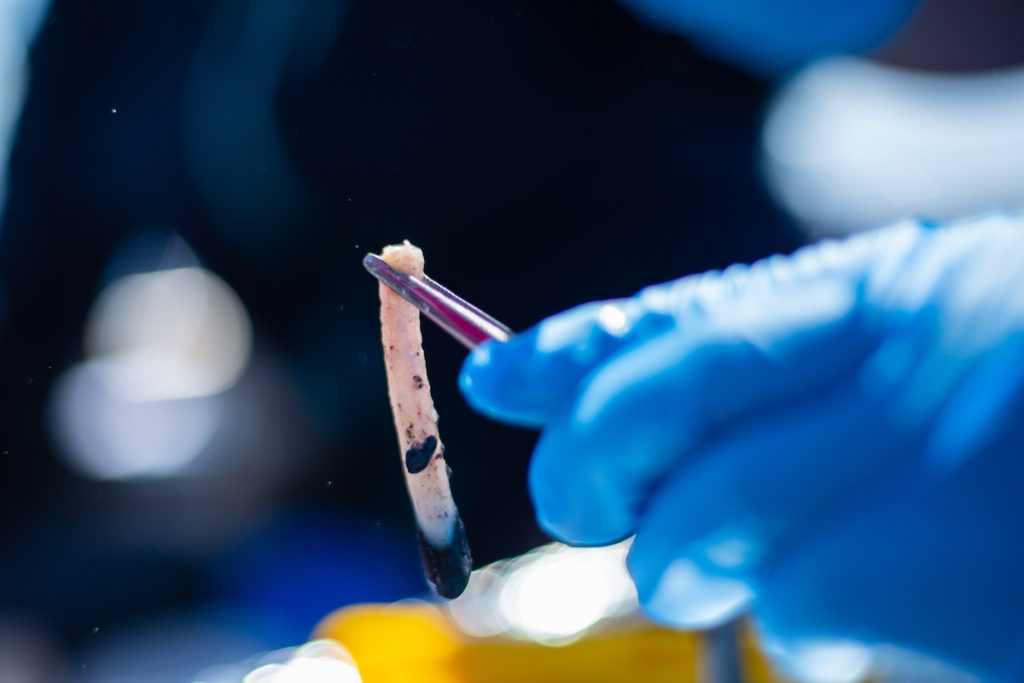Skin, not blubber is the most effective way of revealing migrating whales’ diet, according to new Griffith University research.
Assessing thewhales’blubber and skin tissues,theSouthern Ocean Persistent Organic Pollutants Programteam fromtheCentre for Planetary Health and Food Securitytogether with collaborators at theAustralian Rivers Institute,concludedskinwasthemore suitable tissue for dietary assessment of humpback whales, butfatsin the skinstillinterfered with thechemical signal.
“Blubber and skin samples taken with dart gun from whales migrating from Antarctica are often used to discover the make-up of their diet in the Southern Ocean, and how it’s changing over time,” said PhD candidate Jasmin Gross.
“Unfortunately, the high levels ofaparticular type of carbon(13C) in fats within the tissue,compared to proteins or carbohydrates,confoundsdiet interpretationsofthe samples.
“Solvingthis problemis crucial,asthe chemical signalof carbon and nitrogen in thesesamples from migrating whalesprovidesone of the only ways to look atboththe health ofthe whale population andSouthern Oceanecosystem inwhich they live.”
The team investigated twowaysto account for the confounding effect of fats ondiet interpretations:tochemicallyextractthe fatsout of the samplesorto mathematicallycorrect for the effect of the fats.
“Whileextracting the fatscorrects the chemical signal for carbon in the sample, unfortunately it also negatively affectsnitrogen, both of which areneededto identify the source of the whale’s diet,” Ms Gross said.
 “We need an accurate signal for both carbon and nitrogento maximiseefficientuse ofthe small amount oftissuewe can sample, and streamline cost and effort associated with analyses.”
“We need an accurate signal for both carbon and nitrogento maximiseefficientuse ofthe small amount oftissuewe can sample, and streamline cost and effort associated with analyses.”
For this reason,the researchers alsotestedmathematicalmethodsofcorrectingeffect ofthe fats.
“Wefoundthe mathematical methodsprovideda more accuratealternativetechniquefor dietary studiesofsouthern hemisphere humpback whales and otheranimalsamples with high fat content,’’ Ms Gross said.
“With the Southern Ocean vulnerable to the effects of climate change, thisresearchwillimprovethe accuracy of dietinvestigationof southern hemisphere humpback whalesandour understanding of the feeding ecology of this Antarctic krill consumer.”
This research, published in Rapid Communications in Mass Spectrometry, was undertaken as part of the Humpback Whale Sentinel Program, along-termbiomonitoring program for circumpolar surveillance of chemical pollution and ecosystem shifts in the Antarctic sea-ice ecosystem.


